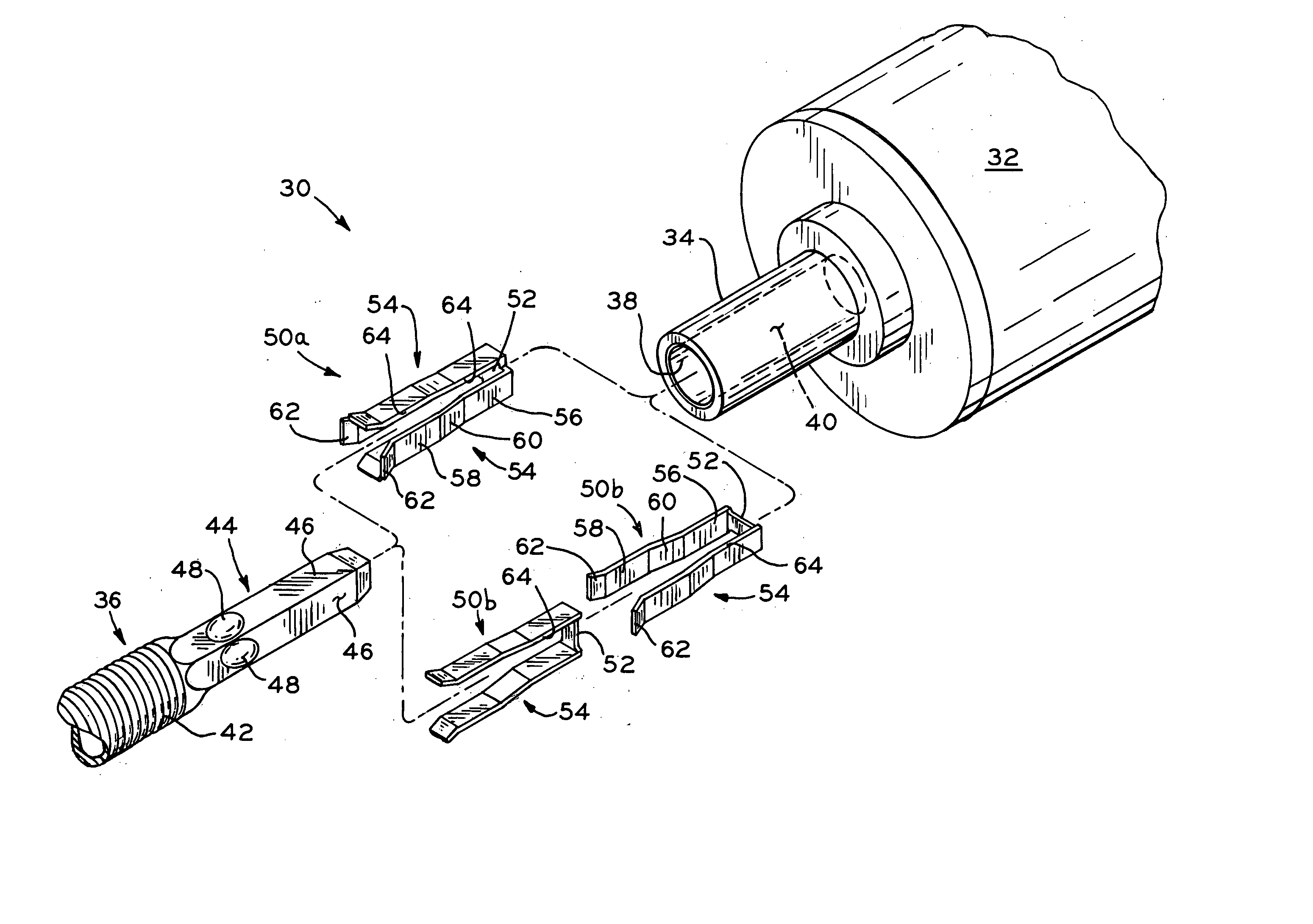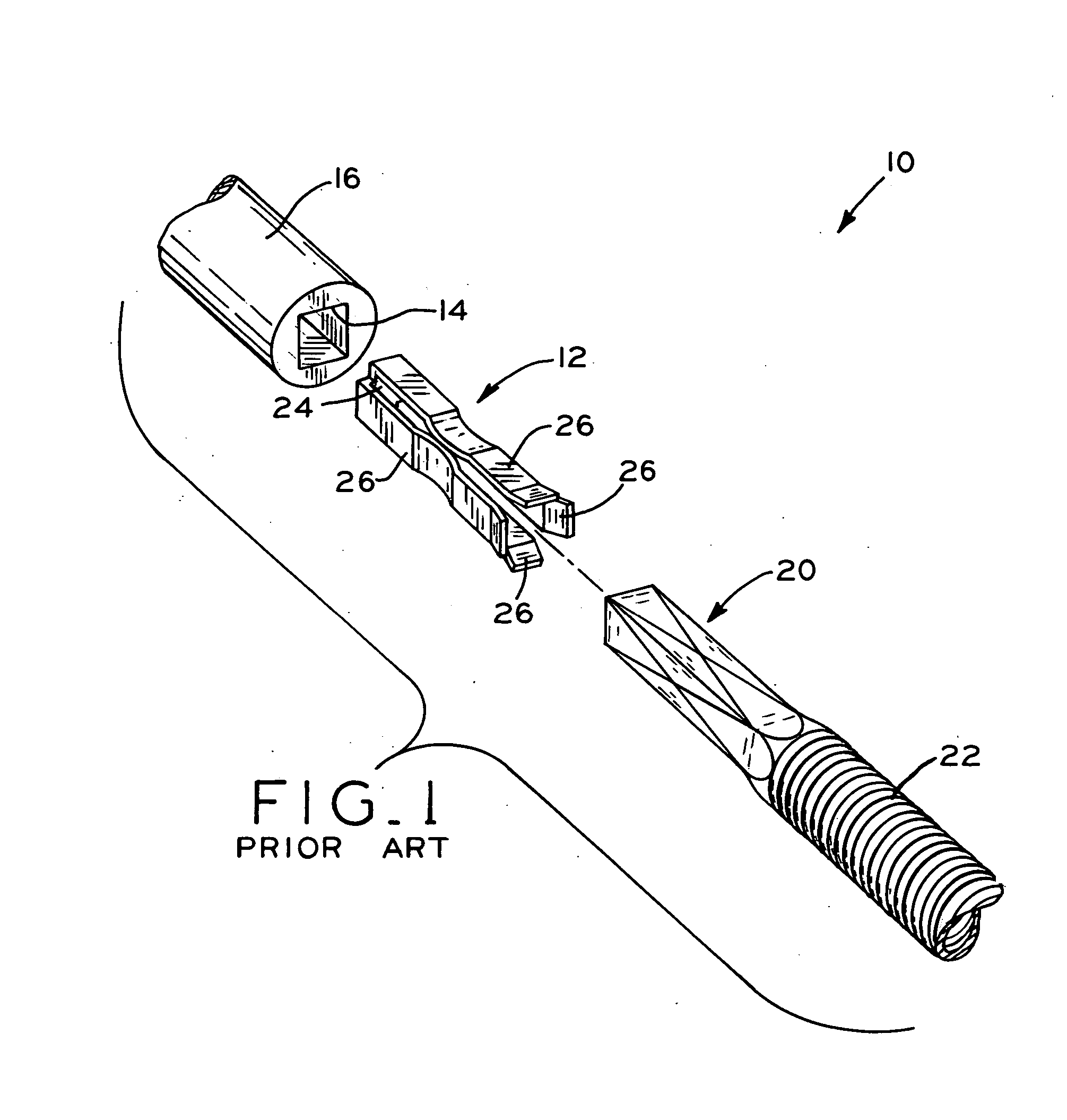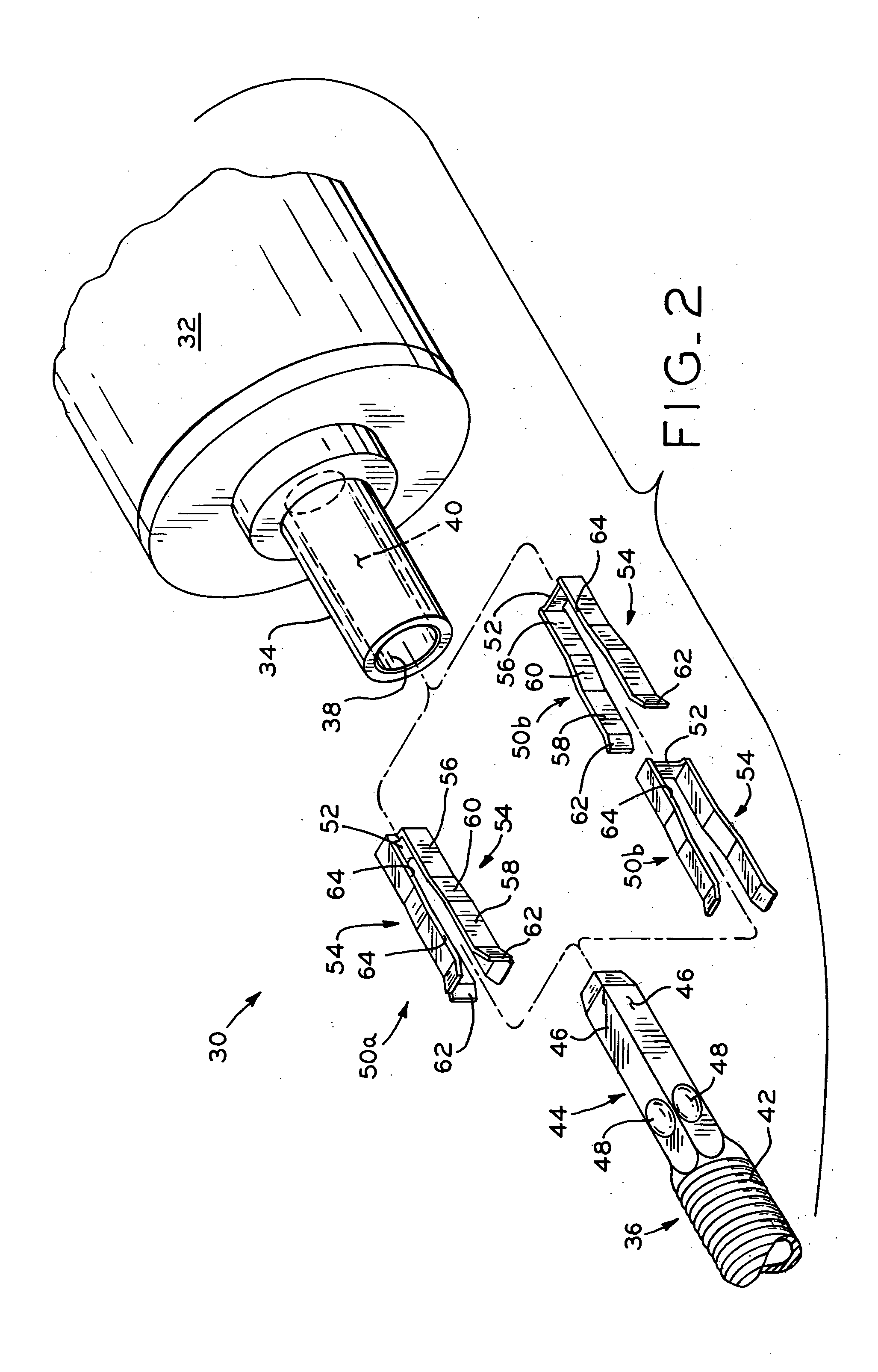Cable drive system
a drive system and cable technology, applied in the direction of shafts for rotary movement, fastening means, couplings, etc., can solve the problems of generating noise and chatter between the cable end and the drive shaft, prone to breakage, and inconvenient stamping of metal stock, so as to reduce the difficulty and expense of manufacturing the present drive system. , the effect of reducing the waste of metal stock
- Summary
- Abstract
- Description
- Claims
- Application Information
AI Technical Summary
Benefits of technology
Problems solved by technology
Method used
Image
Examples
Embodiment Construction
[0028] Referring to FIG. 2, the components of drive system 30 according to the present invention are shown. Drive system 30 includes a prime mover or rotary motion source, shown herein as electric motor 32 having rotatable drive shaft 34. Drive shaft 34 is coupled to flexible cable 36 to provide a driving connection therebetween for transmitting rotary power or torque from drive shaft 34 of motor 32 through flexible cable 36 to a gear box or other driven device (not shown).
[0029] Although drive system 30 is described herein in the exemplary form of a driving connection between an electric motor and a flexible cable, the present invention is also more generally applicable to other types of drive systems in which rotary motion is transferred from any type of drive component to any type of driven component such as an axle or rigid shaft, for example, or other driving connections including solid links. Additionally, although the present invention is described below with reference to ex...
PUM
 Login to View More
Login to View More Abstract
Description
Claims
Application Information
 Login to View More
Login to View More - R&D
- Intellectual Property
- Life Sciences
- Materials
- Tech Scout
- Unparalleled Data Quality
- Higher Quality Content
- 60% Fewer Hallucinations
Browse by: Latest US Patents, China's latest patents, Technical Efficacy Thesaurus, Application Domain, Technology Topic, Popular Technical Reports.
© 2025 PatSnap. All rights reserved.Legal|Privacy policy|Modern Slavery Act Transparency Statement|Sitemap|About US| Contact US: help@patsnap.com



